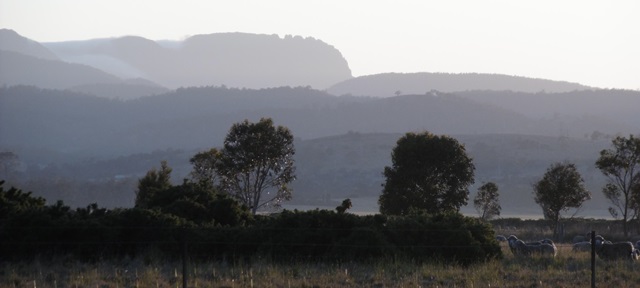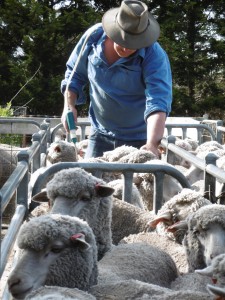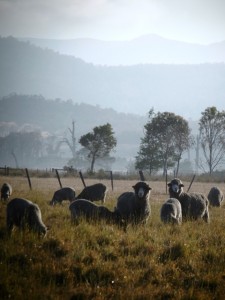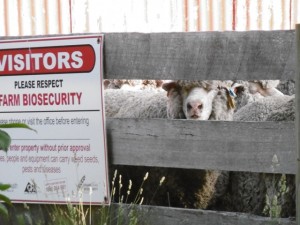Wool’s place in high-end fashion and suiting is well established but a new emerging market of next to skin merino, base layer merino and intimate merino appeal is gaining momentum.
New merino testing technologies gives these emerging markets, both retailers and consumers alike, consistent results of wearer merino comfort and quality for next to skin merino wear.
 Wool ComfortMeter And Wool HandleMeter
Wool ComfortMeter And Wool HandleMeter
When evaluating Merino comfort and wool quality for next-to-skin wear, the most common concerns that people have are prickle, allergies, and itch. The misconception that wool lacks the softness that is essential for next-to-skin comfort is based largely on subjective estimates of the fabric’s handle and feel. However, the Cooperative Research Centre for Sheep Industry Innovation (Sheep CRC) and Australian Wool Testing Authority (AWTA) have made a break through testing meters available, Wool Comfort Meter and Wool Handle Meter. These two new measures of Merino comfort and wool quality are objective and unbiased and give retailers consistent, repeatable results on the quality of the merino products to ensure a superior merino next to skin consumer experience.
What Are A Fabric’s Comfort And Handle?
Merino Comfort
A merino fabric’s comfort refers to its level of smoothness and wearer experience often referre d in the past as a level of prickliness. Comfort is dependent on the fibre’s diameter, the spin and yarn finish used in the processing of the wool fibre and the fabric construction.
d in the past as a level of prickliness. Comfort is dependent on the fibre’s diameter, the spin and yarn finish used in the processing of the wool fibre and the fabric construction.
In general the finer the micron (smaller the number) the softer and more comfort next to skin with fibres of a diameter of less than 18 micron deemed to be comfortable and is suitable for next-to-skin wear.
Superfine merino wool is defined as between 15.6 and 18.5 microns are excellent fabrics for base layer garments and ultrafine merino wool, 15.5 microns and finer ideal for next to skin merino and intimate appeal wear. Hear more about next to skin merino comfort and handle meters and an Australian superfine grower’s bid to ensure the comfort and wearer experience for ultrafine and superfine merino end users as featured on Australian Broadcasting Commission Landline.
Merino Fabric Handle
A fabric’s handle, on the other hand, refers to its softness or feel by hand. The handle is dependent on the fibre’s thickness, density, and weight. Contrary to what most people believe, tests have conclusively shown that a fibre’s comfort and handle are unrelated attributes.
A fibre can, therefore, be hard to handle, but can have a high comfort value with a low prickle. On the other hand, a fibre can be incredibly soft to handle, but can be associated with high prickle or discomfort.
How Can I Evaluate Merino Comfort & Wool Quality For Next-To-Skin Wear?
You may already know that Merino wool garments are sustainable and naturally breathable. You may also be aware that Merino is a moisture wicking and odour resistant fibre.
But are you confident that you want to wear a Merino garment against your skin?
To make this intimate decision, you don’t have to rely on a subjective evaluation anymore.
Two new measures of Merino comfort and wool quality developed following five years of extensive research by Sheep CRC, have taken the guesswork out of Merino comfort and wool quality for next-to-skin wear.
 These two instruments empower retailers and consumers alike by providing increased transparency and confidence that Merino is the fabric of choice for base layers and next-to-skin wear with a superior feel and comfort factor that outperforms all other fibres.
These two instruments empower retailers and consumers alike by providing increased transparency and confidence that Merino is the fabric of choice for base layers and next-to-skin wear with a superior feel and comfort factor that outperforms all other fibres.
Endorsed by the Australian Wool Testing Authority (AWTA) as commercially viable and effective methods of assuring quality and comfort, these new technologies are set to revolutionize how consumer expectations are met by providing predictable comfort and guaranteed softness.
1. What Is The Wool ComfortMeter?
The Wool ComfortMeter is a breakthrough technology and is a new measure of Merino comfort and wool quality. It works by counting the number of protruding fibres in a given area of the fabric or fibre and accurately correlates this to wearer comfort.
The higher the number of bulging fibres, the more is the associated discomfort. The Wool ComfortMeter is, therefore, a quantifiable measure of Merino comfort and wool quality for next-to-skin wear. It also has useful commercial applications as a quality assurance test for medical and baby products.
For the benefit of consumers, the predictive value of the Wool ComfortMeter (WCM) has been honed by large scale wearer trials conducted over a period of four years.
How Does the Wool ComfortMeter Work?
- The meter is non-destructive and scans the fabric placed on its testing bed, providing a single value indicating the fabric’s comfort level, with lower the WCM score the higher comfort level experience for the consumer.
- There are three comfort level ratings within two wearer descriptions of active wear and every day fashions.
1.1 Active Wear
The active wear description has lower value ratings of between WCM 250 to 400 making it ideal for next-to-skin wear with the average person perceiving no discomfort at this level.
It takes into account the raised skin temperature of the active wearer, which raises the sensitivity of the skin to any irritation and hence the lower WCM value levels for this wearer description.
They are describe WCM values of 250 or less as luxurious and premium comfort next to skin experience at an elite performance activity level.
 These values give a wool comfort level described from luxurious though to everyday comfort depending on the level and intensity of consumer activity and well described in their Next-To-Skin, Wool Comfort & Handle pdf at www.woolcomfortandhandle.com
These values give a wool comfort level described from luxurious though to everyday comfort depending on the level and intensity of consumer activity and well described in their Next-To-Skin, Wool Comfort & Handle pdf at www.woolcomfortandhandle.com
1.2 Everyday Fashions
The everyday comfort description group have a WCM value range of 450 to 600 in three user comfort levels.
Again the lower figure WCM value offers the best next to skin comfort experience to the most active consumer within this everyday fashions group.
2. What Is The Wool HandleMeter & How Does It Work?
This is a new measure of Merino (comfort and) wool quality that objectively evaluates the softness of a fabric by measuring the force required to push it through the Wool Handlemeter (WHM) instrument’s nozzle.
Like with the ComfortMeter, the HandleMeter does away with prior subjective assessments and gives a score rating or value on a number of the fabrics attributes including the fabric’s softness, warmness, smoothness, hairiness, and tightness. The WHM gives a value of between 1 to 10, and the higher the WHM value the softer the handle.
Unbiased And Repeatable Merino Comfort & Handle Values
It provides unbiased information about Merino comfort and wool qualityand handle values for next-to-skin wear. The Wool HandleMeter WHM is, therefore, an independent and objective calibration of a fabric’s handle or feel, which overrides previous subjective estimates and language barriers across global supply chains.
 Read more about these new exciting technologies and down load their brochure at www.woolcomfortandhandle.com
Read more about these new exciting technologies and down load their brochure at www.woolcomfortandhandle.com
Is Superfine Merino Wool Ideal For Next-To-Skin Wear?
Quite simply put, yes. New measures of Merino comfort and wool quality, by way of the Wool ComfortMeter and the Wool HandleMeter, have created clear product differentiation.
The bad reputation that wool had for being too itchy and prickly for base layer garments has been decisively repaired. It’s easier than ever for retailers to offer consumers quality merino next-to-skin and active merino wear.
Superfine and ultrafine Merino wool can now be independently certified as the most comfortable next-to-skin garments, offering unrivalled comfort and ultimate customer satisfaction. We now have the opportunity to confidently say that Merino comfort and wool quality for next-to-skin wear is unparalleled by any other fabric.









